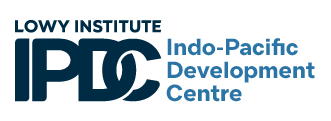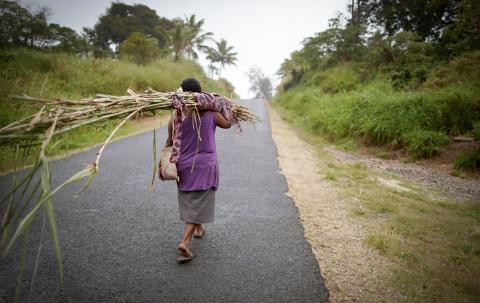Chinese engagement in the Pacific regularly hit the headlines in 2022, sometimes with dire warnings. The recent China–Solomon Islands security agreement sent shock waves across the region. Concern reached new highs when China provided replica assault weapons and police training. This came on top of military assistance to Fiji, Papua New Guinea and Tonga that included “combat-oriented” equipment. In Solomons, Australia quickly responded by moving forward its own arms provision. On the aid front, China’s foreign minister Wang Yi’s recent tour de force led to the signing of multiple bilateral agreements with almost a dozen Pacific Island nations.
But not all is going China’s way. The offer of a wide-ranging Pacific trade and security deal was knocked back by Pacific island countries in May. Jitters about Chinese loans and repayments are increasing. The Samoan prime minister cancelled a $100 million Chinese-backed port development. There is also no sign that PNG will proceed with the US$4.1 billion economic road project signed with China in 2017 – leaving dormant China’s largest Pacific project.
So, what is happening with Chinese engagement in the Pacific?
On the aid front, it might be less than most assume.
The Lowy Institute Pacific Aid Map reveals that China’s development financing has continued to decline after peaking in 2016. There has been surprisingly little new Chinese financing in response to the Covid-19 crisis. In fact, China’s total development finance fell to just US$187 million in 2020 – the lowest annual level recorded by the Pacific Aid Map (see figure below). This mainly reflects a fall in loans – likely because of limited absorption capacity and lower cost options from other development partners. Preliminary data suggest this trend continued in 2021.
What is behind the decline?
It seems to be both a supply and demand issue.
On the supply side, the drop in Chinese lending to the region is in line with global trends. Since 2017, Beijing has been tightening capital controls, increasing regulatory measures to curtail domestic financial risks, and taking a more cautious approach given concerns about political and investment returns on China’s Belt and Road Initiative (BRI). Recent research has also revealed Chinese investors are struggling to manage investment risk, political uncertainty and project quality. Their need for bankable projects is hitting speed bumps.
On the demand side, tales of BRI corruption are common and, despite benefits from projects, not all has gone well. Tonga has struggled with loan repayments and asked for another extension. In Fiji and PNG, uncompleted multi-storey Chinese buildings sit deteriorating. In Vanuatu, the Convention Centre has been labelled a “white elephant”. These outcomes have reduced the appetite for new Chinese infrastructure lending in the Pacific.
In addition, after two years of border closures, limited tax revenues and high government expenditure, fiscal space has shrunk. Rising debt sustainability worries have led Pacific countries to seek low-cost concessional financing, most often from traditional partners or multilateral agencies. The more competitive infrastructure lending landscape has been to the detriment of new Chinese projects.
Overall, the data suggest only Solomon Islands and Vanuatu signed up to new loans with China between 2017 and 2021.
After Covid hit, border closures and supply chain disruptions hampered project implementation. With declining government revenues, the priority shifted away from long-term development projects – such as infrastructure – towards crisis response. Ensuring basic public services, civil servant salaries and government support to hard-hit businesses and households became critical. Most major development partners responded by providing direct budget support to Pacific governments. Beijing, however, does not provide budget support. Unable to adjust its development financing delivery mechanisms during the crisis, Beijing’s foreign support lacked in amplitude and relevance.
China is in the region to stay
These trends don’t mean that China is vacating the Pacific. It is more likely China is refining its engagement and targeting efforts to reduce risk and increase returns, both strategic and economic. For example, China pledged large amounts of aid to Solomon Islands and Kiribati, both of which switched diplomatic recognition from Taiwan to China in 2019 (see figures below). In Solomon Islands, China is financing the US$53 million 2023 Pacific Games Stadium, and has doubled discretionary and unaccountable funds for MPs to spend in their constituencies.
In Kiribati, Beijing is focusing on improving health and agricultural support, for example providing portable x-ray machines and supplying machinery, equipment and experts to improve agricultural productivity.
In most other Pacific Island countries, however, Chinese development financing has been continuously decreasing, but not necessarily diplomatic and other engagements that do not fit neatly under the definition of “aid”, or indeed reported or visible in budgets. Some argue that the Chinese BRI is increasingly paid for by non-Chinese sources such as the Asian Development Bank – a money saver for China but a bonus for Pacific Island countries wanting engagement with stronger quality control.
How China’s Pacific engagements will evolve in the coming years remains a question. The current dip in development finance could be quickly reversed given the right investment or strategic opportunities. Alternatively, China might shift gears to forms of engagement that can yield influence at lower cost.
A product of the Lowy Institute Indo-Pacific Development Centre, with funding support from the Australian Department of Foreign Affairs and Trade.



